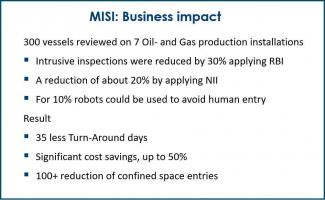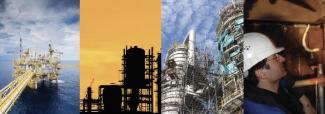
Guest blog by our technical expert Maintenance and Inspection strategies: Martin van den Heuvel
The Minimum Intervention Strategy for Inspection was launched at the API Inspection Summit in Galveston. The objective is reducing the scope for turn arounds by optimizing the use of Risk Based Inspection analysis, applying Non-Intrusive Inspection where possible and replacing human entries for inspection with robot inspections.
Application in a major Oil- and Gas- producing company over 30 installations has led to:
-
Up to 50% cost reduction for Turnarounds
-
Average 5 days reduction of Turnaround time
-
Significant reduction of confined space entries
What is a Minimum Intervention Strategy for Inspection (MISI)?
Minimum Intervention Strategy for Inspection (MISI) is a methodology aimed at maturing an assets risk based inspection strategies in a structured manner.
The basis for the application of a Minimum Intervention Strategy is the optimal use of Risk Based Inspection (RBI). After an initial strategy is developed it is transferred into a living program by improving Corrosion Management and operating within Integrity Operating Windows.
The detailed knowledge of expected degradation and its morphology enables the choice of alternative inspection methods such as Non-Intrusive Inspection and robots for intrusive inspections.
The value drivers for a Minimum Intervention Strategy
Reduce Turnaround scope and down-time of the installation
The reduction of scope for a Turnaround will lead to an increased availability of the installation for production in Oil- and Gas- and other facilities such as power generation.
Less intervention costs for preparation of vessels
The reduced scope will also lead to less direct ‘mechanical’ cost for opening equipment and less requirements for cleaning and scaffolding. For intrusive inspection with robots less isolation may be required.
HSSE impact
The RBI analysis reduces risk and the need for internal inspections, it will result in less confined space entries. The scope reduction also leads to reduced offshore travel for mechanical work/scaffolding/cleaning.
RBI Implementation
The first step in optimizing the inspection strategy of a facility is defining a Risk Based Inspection plan and implement it in a database for future improvement. A well-defined strategy may lead to a 2,5% increased availability over the life cycle of a facility. The strategy will register the criticality of equipment, define initial intervals for inspection and may be used to demonstrate compliance with legislation.
RBI for Pressure Relief Valves
After the strategy for pressure vessels and piping has been defined, Pressure Relief Valves may follow a similar process and the combination of the strategies will steer the overall shutdown strategy for a facility and form the basis for MISI.
RBI Optimization
The implementation of a minimum intervention strategy is most effective by optimizing the Risk Based Inspection analysis. After a Corrosion Risk Assessment, the inspection scope is defined based on the actual processes and historic data of an installation. Further optimization is possible by implementing a Corrosion Management Framework, a group of technical experts to monitor performance and reduce corrosion and by defining and monitoring the Integrity Operating Windows. For example a precise monitoring and operations of a steam boiler PH values will significantly reduce corrosion. The RBI analysis can be measured in terms of efficiency and effectiveness, the optimal result is optimizing both, the graph below shows the improvement opportunities:
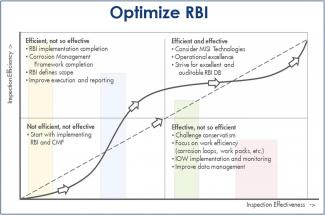
Non-Intrusive Inspection
The application of Non-Intrusive Inspection means that the intrusive inspection is replaced by an external inspection. The API 581 defines ‘effectiveness tables’ that guides the replacement of an internal inspection with an evenly effective external inspection. An example for a comparison of the inspection for thinning: Visual inspection only for thinning is less effective than measuring the wall thickness.
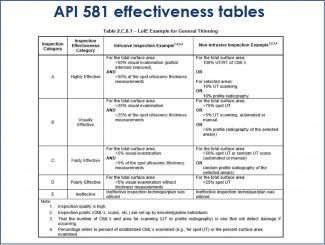
External Non-Intrusive Inspection requires detailed knowledge of the application of advanced Non-Destructive Testing techniques. The RBI analysis will give clarity on the appearance and morphology of potential defects, advanced NDT will determine the most effective technology to detect and size the defects.
Use of Robots for internal inspection
Another option to avoid entering confined spaces is to use robots. In the Petrobot project several robots have been developed to replace internal inspections. New developments and applications appear regularly.
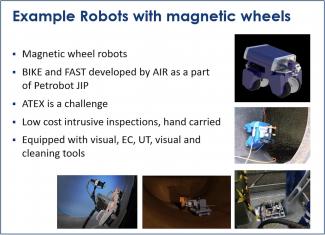
And finally: The impact
The results of applying a Minimum Intervention Strategy can be measured in terms of value drivers. The scope for Turnarounds can be significantly reduced by applying a Minimum Intervention Strategy!
